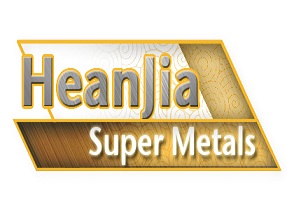Product (738)
- Pure Nickel Products (38)
- Incoloy Products (74)
- Inconel Products (72)
-
FeCrAl Product
(99)

-
Nichrome Products
(68)

- Monel Products (36)
- Hastelloy Products (49)
- Nickel Iron Alloy Product (59)
-
Nickel Copper alloys
(47)

- Nonferrous Metal Product (27)
-
Resistance Wire
(90)

- Stainless Steel Product (42)
- Mesh Demister (20)
- Others (17)
Product Forms (14)
Quality Certificate (11)
Learning Gallery (30)
Incoloy News (9)
Inconel News (22)
Molybdenum News (7)
Nikrothal News (4)
Nichrome News (13)
Titanium News (2)
Nickel News (8)
Alloys House (30)
Tools (27)
Nickel alloy News (30)
Latest Buzz (30)
nickel chrome copper iron alloys news (28)
Credit Report
Products Index
Company Info
Heanjia Super-metals Co., Ltd. [China (Mainland)]
Business Type:Manufacturer, Trading Company
City: Beijing
Province/State: Beijing
Country/Region: China (Mainland)
Tools
NiCr-Nichrome Resistance Heating Alloys

Resistance Heating Alloys
The resistance heating alloys can be divided into two main groups.
The FeCrAl and the NiCr based alloys. For lower temperature applications CuNi and NiFe based alloys are also used. The different alloys are described below as well as a comparison of some of the properties of the FeCrAl and the NiCr based alloys.
NiFe
Up to 600 °C 1110 °F: Ni70Cr30 and Ni60Cr15 are alloys with low resistivity and high temperature coefficient of resistance. The positive temperature coefficient allows heating elements to reduce power as temperature increases. Typical applications are in low temperature tubular elements with self-regulating features.
Austenitic Alloys (NiCr, NiCrFe)
Up to 1200 °C 2190 °F: Ni80Cr20 is the austenitic alloy with the highest nickel content. Because of its good workability and high-temperature strength, Ni80Cr20 is widely used for demanding applications in the electric appliance industry.
Up to 1250 °C 2280 °F: Ni70Cr30 (Normally used in furnace applications)
Up to 1150 °C 2100 °F: Ni60Cr15 has good corrosion resistance, good oxidation properties and very good form stability. The corrosion stability is good except in sulphur containing atmospheres.
Typical applications for Ni60Cr15 are in tubular heating elements and as suspended coils.
Up to 1100 °C 2010 °F: Ni35Cr20 is used as electric heating element material in domestic appliances and other electric heating equipment at operating temperatures up to 1100 °C 2010 °F.
Next Page:
FeCrAl Resistance Heating Alloys



